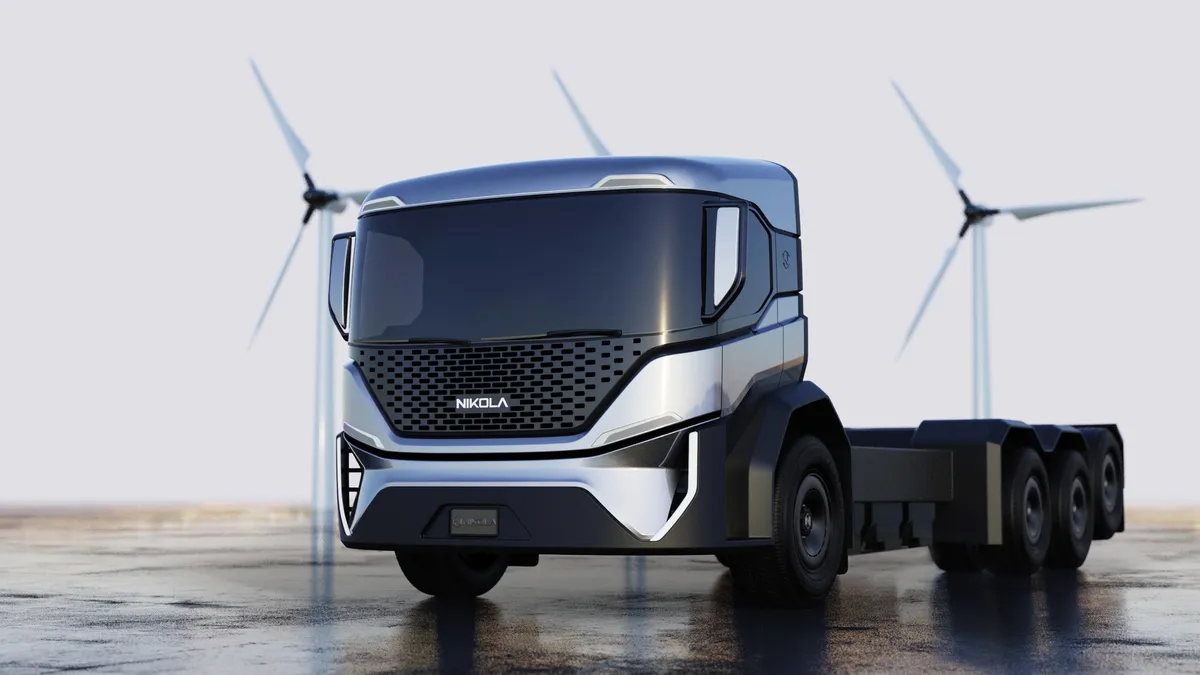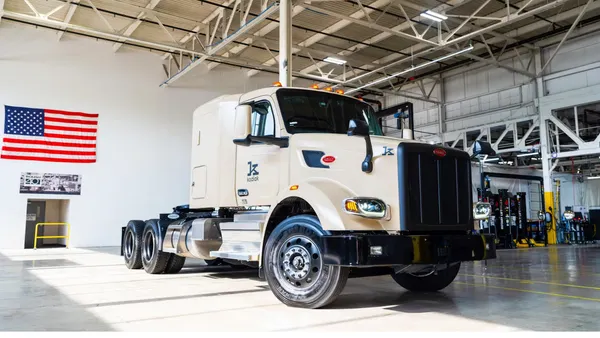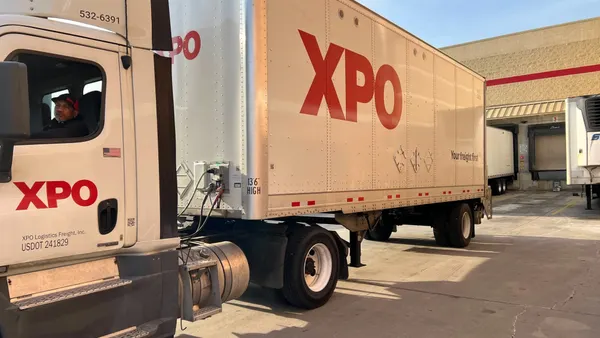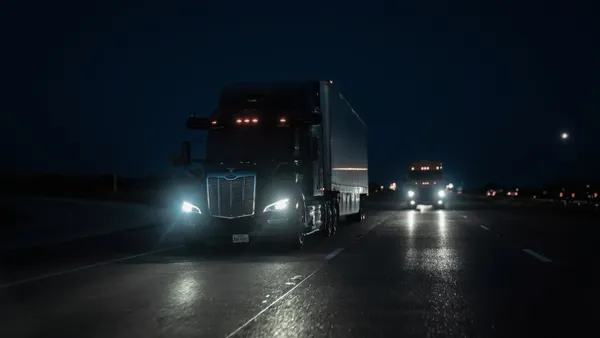Dive Brief:
- Southern California, Northern California, Cascadia (the Northwest), the Northeast, the Texas Triangle and the Front Range (the Denver region) are the six regions that have the most potential for electric heavy-duty trucks, according to a report by the North American Council for Freight Efficiency and the Rocky Mountain Institute. The report also looked at where diesel costs the most, and California and the West Coast consistently lead the regions in fuel costs.
- These regions met three key criteria: freight demand in an area where air quality is of concern; adequate support regarding infrastructure and incentives; and electricity pricing. The report stressed the regions have the potential to begin switching regional hauls to electric trucks now.
- NACFE and the institute recommended that, in high-potential regions, fleet owners and managers with trucks operating regional haul routes of approximately 230 miles or less per shift, or per day, "should immediately begin planning for electric truck deployments — even if only on a pilot scale. It can take longer than a year to build out charging infrastructure and acquire vehicles, so it makes sense to start today."
Dive Insight:
Southern California is perhaps the only region named that has a head start on prepping infrastructure needed for wide regional use of electric trucks. Policymakers there, including officials from the Port of Los Angeles and the Port of Long Beach, have been working with fleets to adopt the use of electric tractors for shorter hauls.
Outside of Southern California, the decision to use electric trucks largely belongs to the fleets. And it's usually the burden of the fleet to install charging stations. That means the trucks have to stay closer to their base of operations, as electric trucks have limited range — usually 200 miles maximum, according to Mike Roeth, NACFE executive director, who spoke to Transport Dive in February.
But OEMs are working on expanding range, and state governments and utilities are assessing adding public charging stations, accessible to Class 8 trucks, every 50 miles along Interstate 5 and connecting highways, according to a report issued in June through the West Coast Clean Transit Corridor Initiative.
Regional haul operations will grow, the report said, driven by an expected overall 50% growth in freight by 2045 (compared to a 2012 baseline), according to estimates from the Department of Transportation. But policy support is needed to convert the regional hauls to electric. In considering a switch to electric trucks, the report suggested fleets look at the 15 states and the District of Columbia, which signed a MOU that set sales goals of 30% for zero-emission medium-duty and heavy-duty trucks by 2030, and 100% by 2050.
"The 15 states and D.C. account for almost half of the US economy and nearly 40% of goods moved by truck (by value)," the report said.
NACFE received a major grant on Jan. 1 from the Hewlett Foundation and the ClimateWorks Foundation to study how battery-electric vehicles will best fit into the regional haul market.











